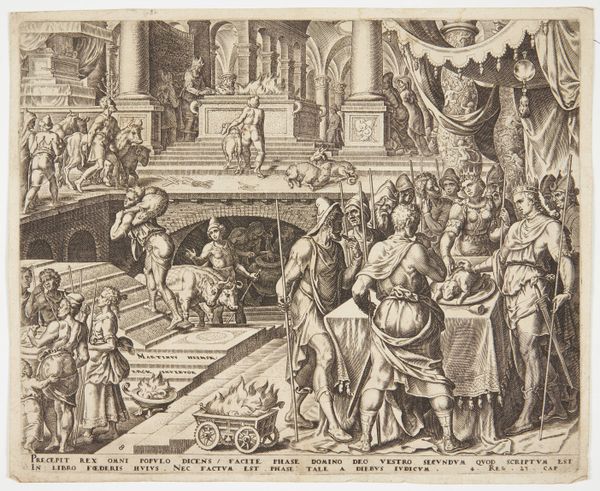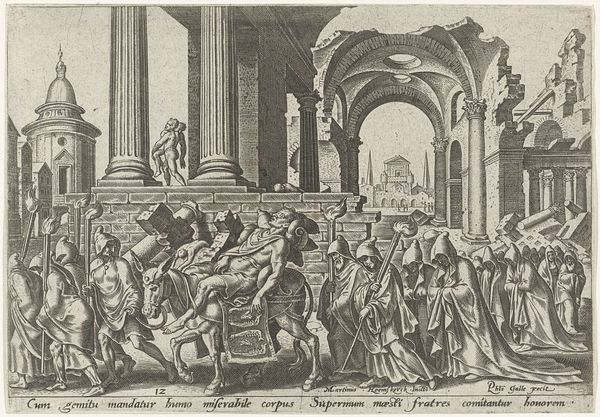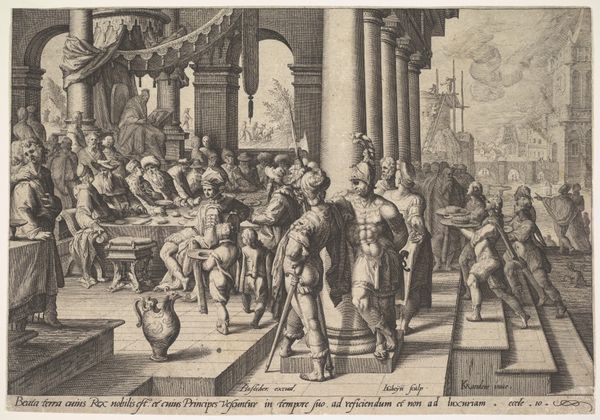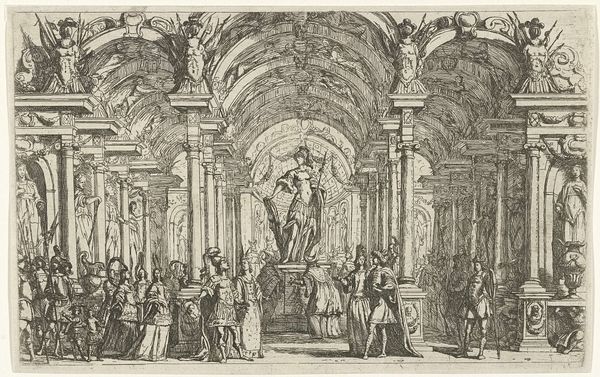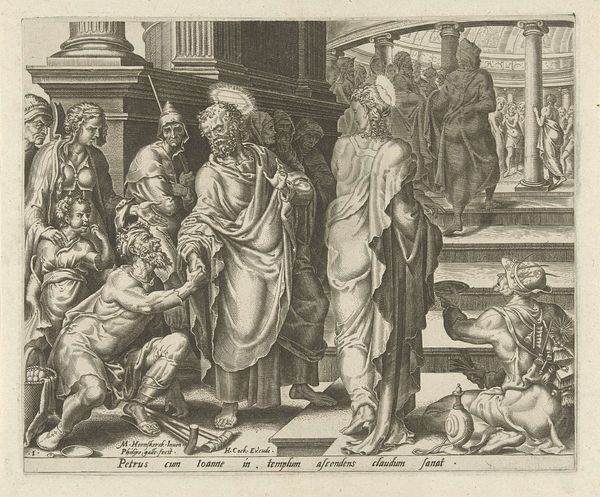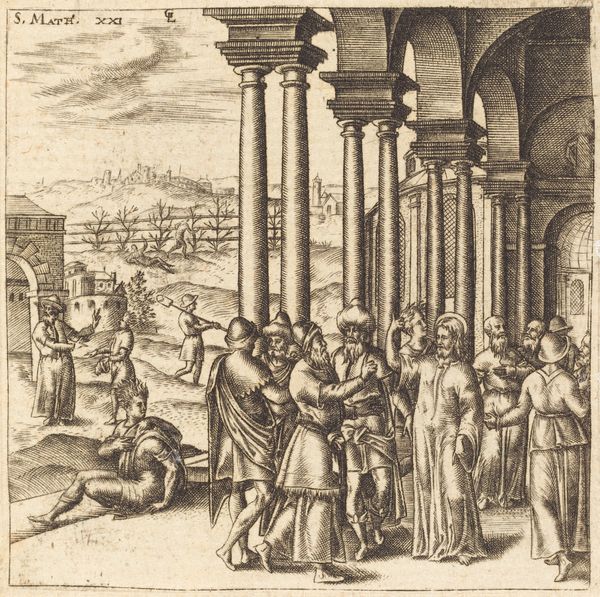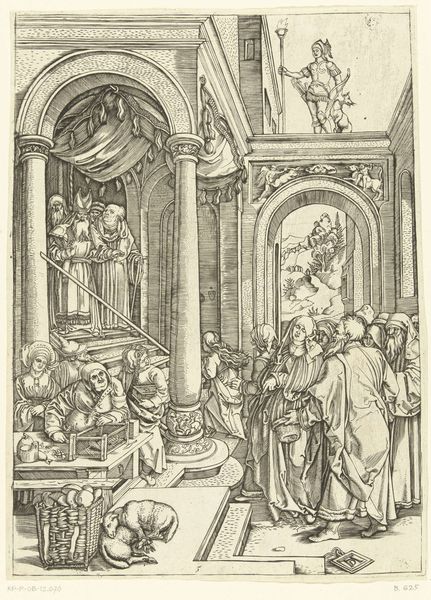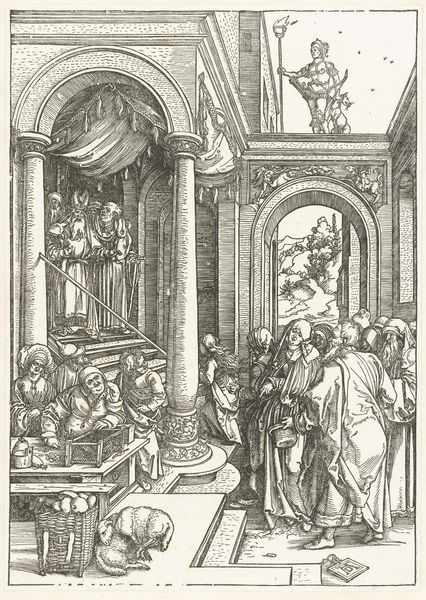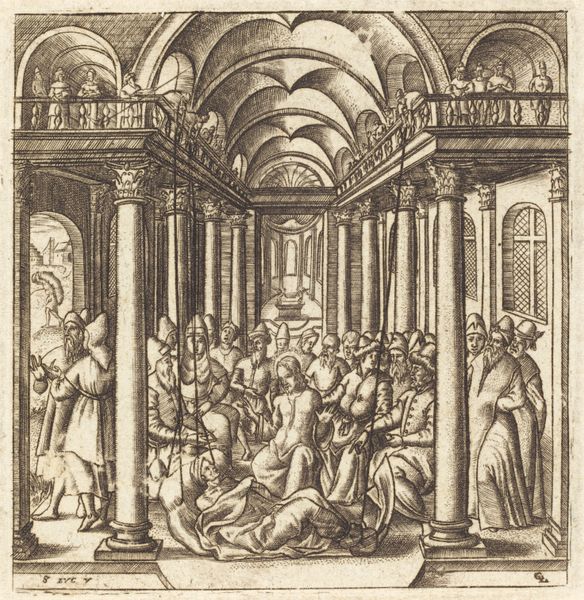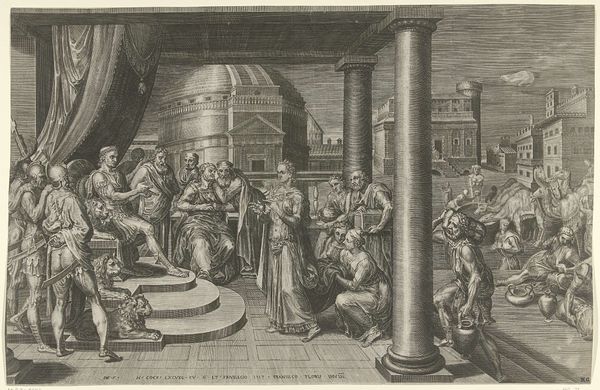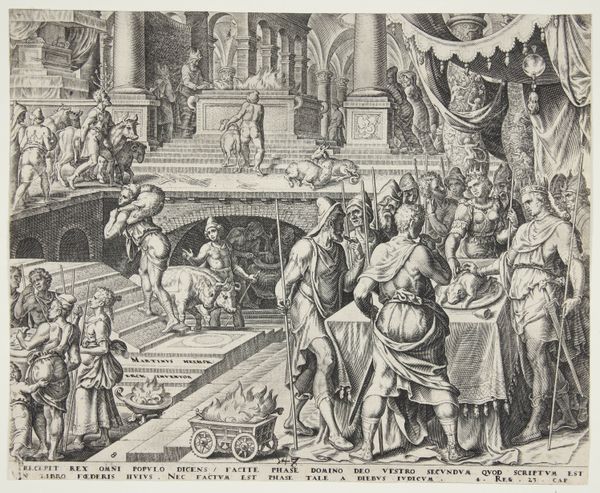
drawing, print, engraving
#
drawing
#
narrative-art
# print
#
figuration
#
11_renaissance
#
line
#
history-painting
#
northern-renaissance
#
engraving
Dimensions: height 142 mm, width 201 mm
Copyright: Rijks Museum: Open Domain
Philips Galle made this engraving, "Jehu worshipping the idol of the golden calves", sometime before 1612. The image depicts a biblical scene set within a ruined classical temple. But its evocation of antiquity also reflects the rise of humanist scholarship in Galle’s 16th-century Netherlands. It shows the Israelite King Jehu, who, though tasked by God to destroy the cult of Baal, continued to worship golden calves. What might this image have meant to its early modern audience? The Dutch revolt against the Spanish Habsburgs was underway. To some, the story of Jehu, a leader who only partially fulfills his religious duties, could have been a cautionary tale about the dangers of incomplete reformation. By studying period texts, such as religious pamphlets and political treatises, we can start to unpack the complex relationship between faith, power, and national identity in this image and understand how art comments on the social structures of its own time.
Comments
No comments
Be the first to comment and join the conversation on the ultimate creative platform.
